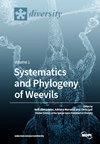A Hotspot of Subterranean Biodiversity on the Brink: Mo So Cave and the Hon Chong Karst of Vietnam
IF 2.1
3区 生物学
Q2 BIODIVERSITY CONSERVATION
引用次数: 0
Abstract
The southern part of the Mekong Delta Limestones of Vietnam (MDL-HC or Hon Chong karst) comprises numerous small limestone hills. It is a hotspot of biodiversity for soil and cave invertebrates. Here, we synthesize the results of biological surveys carried out in Hang Mo So, the richest MDL-HC cave for troglobionts, and in surrounding karsts. Methodologies for the ecological characterization of species are discussed, with emphasis on parallel sampling (external soil plus cave). Hang Mo So has 27 troglobionts, including many still undescribed. An additional 40 cave-obligate species are known from other caves of MDL-HC. Among them, several are expected to be found in Hang Mo So. Most troglobionts of MDL-HC are endemic. Several relictual taxa without close relatives in Southeast Asia occur in Hang Mo So and in MDL-HC, reflecting an ancient origin of the fauna. The reasons for this richness are uncertain, but the cause of its current destruction—quarrying—is all too evident. Most of the original 4 km2 of the MDL-HC karst has been destroyed or soon will be, ultimately leaving only 1.6 km2 unquarried. Endemic species linked to karst habitats are, therefore, under clear threat of extinction. The Hon Chong karst (MDL-HC) was listed among the ten most endangered karsts on the planet 25 years ago. Today it would probably top the list.边缘地下生物多样性的热点:越南莫梭洞和汉冲喀斯特
湄公河三角洲南部的越南石灰岩(MDL-HC或Hon Chong karst)由许多小石灰岩山丘组成。它是土壤和洞穴无脊椎动物生物多样性的热点。在此,我们综合了在洞穴中最丰富的MDL-HC穴居动物坑莫索及其周围岩溶的生物调查结果。讨论了物种生态表征的方法,重点是平行采样(外部土壤加洞穴)。杭墨索有27种穴居动物,其中许多仍未被描述。在MDL-HC的其他洞穴中发现了另外40种洞穴专性物种。其中,有几个有望在杭墨索找到。大多数MDL-HC的穴居体是地方性的。在恒墨索和MDL-HC有几个在东南亚没有近亲的宗教分类群,反映了动物群的古老起源。如此丰富的原因尚不清楚,但其目前的破坏原因-采石-是太明显了。MDL-HC喀斯特原有的4平方公里大部分已经或即将被破坏,最终只剩下1.6平方公里未被开采。因此,与喀斯特生境有关的特有物种明显面临灭绝的威胁。汉冲喀斯特(MDL-HC)在25年前被列为地球上十大最濒危喀斯特之一。今天,它可能会排在榜首。
本文章由计算机程序翻译,如有差异,请以英文原文为准。
求助全文
约1分钟内获得全文
求助全文
来源期刊

Diversity-Basel
Environmental Science-Ecological Modeling
CiteScore
3.40
自引率
12.50%
发文量
925
审稿时长
11 weeks
期刊介绍:
Diversity (ISSN 1424-2818) is an international and interdisciplinary journal of science concerning diversity concept and application, diversity assessment and diversity preservation. It is focused on organismic and molecular diversity. It publishes reviews, regular research papers and short notes in the regular issues. Related news and announcements are also published. Our aim is to encourage scientists to publish their experimental and theoretical results in as much detail as possible. Therefore, there is no restriction on the length of the papers. Full experimental details must be provided so that the results can be reproduced.
 求助内容:
求助内容: 应助结果提醒方式:
应助结果提醒方式:


